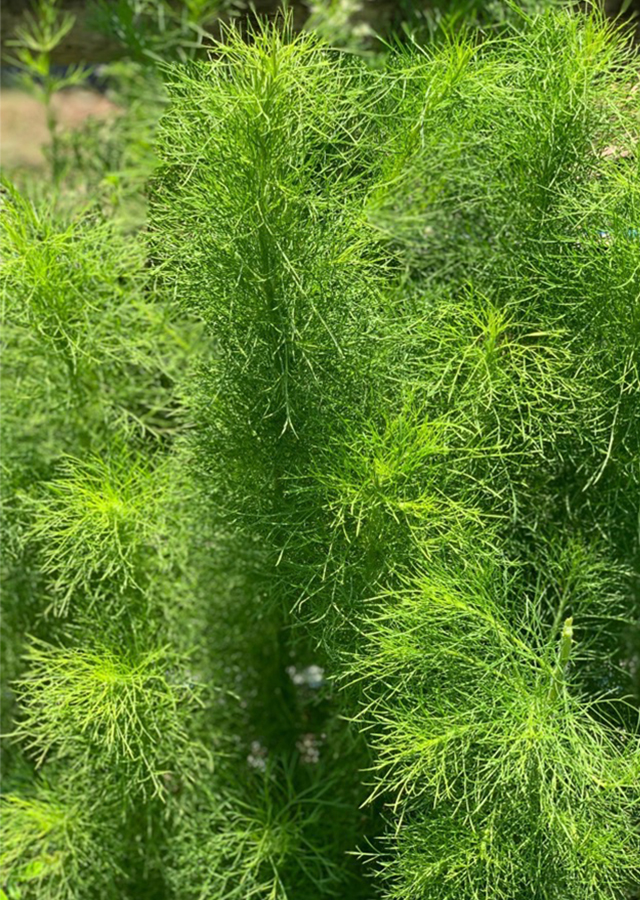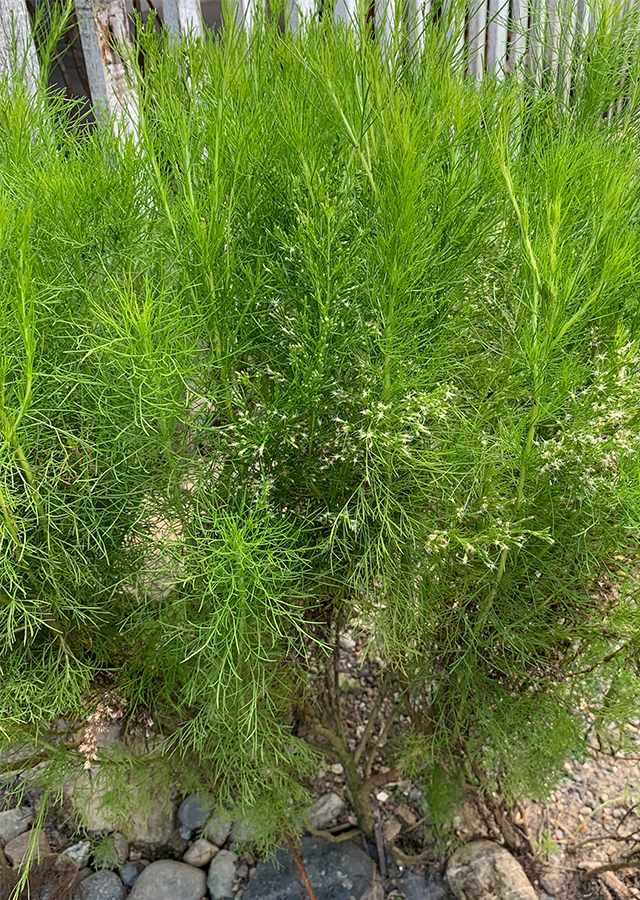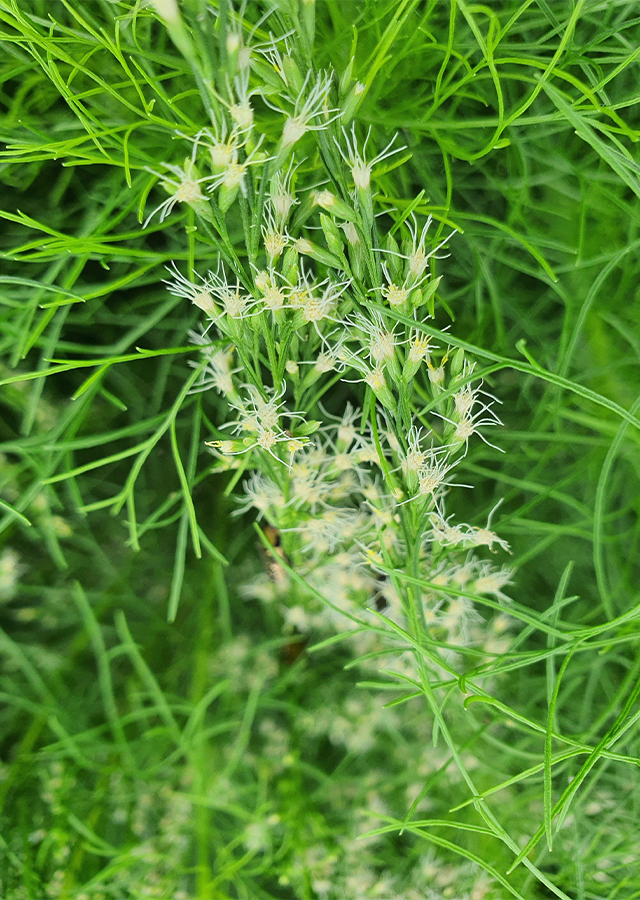Dog Fennel
Eupatorium capillifolium (Lam.) Small ex Porter & Britton
Asteraceae
Location in our garden
Principal



Synonym
Artemisia capillifolia Lam.
Chrysocoma capillacea Michx.
Eupatorium foeniculaceum Willd.
Habitus
Herbaceous. An herbaceous perennial weed, reaching over 1.6 m in height
Part Used
Leaves
Seeds
Growing Requirements
Full Sunshine
Need Shade
Habitat
Roadside
Grassland
Overview
This species is native to North America. Introduce to Assam, Costa Rica, Cuba, Guatemala, Hawaii, Honduras, India, Myanmar, Nepal, New York, Nicaragua, Thailand, Venezuela, Vietnam. The name of the genus is derives from the Greek name for these herbaceous and shrubby plants in honour of the King of Pontus, Mithridates VI Eupator, 132-63 B.C., who allegedly found medicinal uses for some plants of the species Eupatorium.
Vernacular Names
Sneeze weed (English), Hinojo de sabana (Spanish), Adas anjing (Indonesia).
Agroecology
In pastures, roadsides, abandoned fields, and waste areas, E. capillifolium is a common weed. Dog fennel favors places that receive full light, but can be found in partial shade areas. In damp but well-drained soils, it is readily cultivated. Best in hot summer climates with some afternoon shade. Tolerates most forms of soil. Tolerates dry soils that are sandy. Plants have high tolerance to drought.
Morphology
- Roots - fibrous root.
- Stem - stiff, woody-based, often reddish, upright stems clad with crowded, feathery.
- Leaves - finely-dissected leaves which are pinnately divided into thread-like segments. Leaves are unpleasantly aromatic when crushed.
- Flowers - minute, greenish-white, somewhat ornamentally insignificant flowers bloom in late summer. The small, 3-5 flowered heads are numerous and arranged in large, leafy, pyramid-shaped end clusters (corymbs).
- Fruits - smooth achenes.
Cultivation
- Dog fennel can be propagated by seeds (generative propagation) and spreading rootstocks (vegetative propagation).
- Removal of individual plants will prove difficult because of its fibrous root system, and care must be taken to make sure that all roots are removed to avoid re-sprouting. Hand-removal of seedlings is successful before the creation of an extensive root system.
Chemical Constituents
Essential oils (camphene, limonene, terpinolene, myrcene, 2,5-dimethoxy-p-cymene), alkaloids, terpenoids, coumarin, flavons, tannins, quinones, saponins, steroids.
Traditional Medicinal Uses
Medicinal Uses
There are essential anti-inflammatory, antifungal, and insecticidal activities in this plant. Eupatorium purpureum has been mainly used to treat urinary tract infections and inflammation and as a diuretic.
Traditional Uses
Native Americans used infusions for the treatment of fever, cold, pneumonia, arthritic, and rheumatic pains.
Part Used
Reference Sources
https://powo.science.kew.org/taxon/urn:lsid:ipni.org:names:99677-2
Irsyam, A.S.D., & M.R. Hariri. 2016. Eupatorium capillifolium (Lam.) Small ex Porter & Britton (Asteraceae: Eupatorieae).
A NEW RECORD FOR FLORA OF JAVA. . AL-KAUNIYAH; Journal of Biology, 9(2): 80-86.


